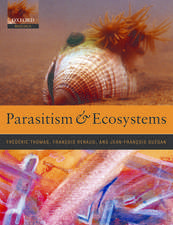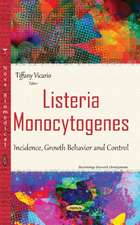Life in Extreme Environments
Editat de Ricardo Amils Pibernat, Cynan Ellis-Evans, Helmut G. Hinghofer-Szalkayen Limba Engleză Paperback – 30 noi 2010
(Investigating Life in Extreme Environments - A European perspective, European Science Foundation, May 2007)
| Toate formatele și edițiile | Preț | Express |
|---|---|---|
| Paperback (1) | 1064.48 lei 39-44 zile | |
| SPRINGER NETHERLANDS – 30 noi 2010 | 1064.48 lei 39-44 zile | |
| Hardback (1) | 1086.81 lei 39-44 zile | |
| SPRINGER NETHERLANDS – 30 iul 2007 | 1086.81 lei 39-44 zile |
Preț: 1064.48 lei
Preț vechi: 1400.63 lei
-24% Nou
Puncte Express: 1597
Preț estimativ în valută:
203.70€ • 214.19$ • 168.31£
203.70€ • 214.19$ • 168.31£
Carte tipărită la comandă
Livrare economică 14-19 aprilie
Preluare comenzi: 021 569.72.76
Specificații
ISBN-13: 9789048175963
ISBN-10: 9048175968
Pagini: 460
Ilustrații: VIII, 450 p.
Dimensiuni: 193 x 260 x 24 mm
Ediția:Softcover reprint of hardcover 1st ed. 2007
Editura: SPRINGER NETHERLANDS
Colecția Springer
Locul publicării:Dordrecht, Netherlands
ISBN-10: 9048175968
Pagini: 460
Ilustrații: VIII, 450 p.
Dimensiuni: 193 x 260 x 24 mm
Ediția:Softcover reprint of hardcover 1st ed. 2007
Editura: SPRINGER NETHERLANDS
Colecția Springer
Locul publicării:Dordrecht, Netherlands
Public țintă
ResearchCuprins
Access to glacial and subglacial environments in the Solar System by melting probe technology.- Exploration of Ellsworth Subglacial Lake: a concept paper on the development, organisation and execution of an experiment to explore, measure and sample the environment of a West Antarctic subglacial lake.- Thermostable proteins as probe for the design of advanced fluorescence biosensors.- Astrobiological significance of minerals on Mars surface environment.- Industrial barrens: extreme habitats created by non-ferrous metallurgy.- Viruses in extreme environments.- Microbial ecology of submerged marine caves and holes characterized by high levels of hydrogen sulphide.- Extremely halophilic archaea and the issue of long-term microbial survival.- Planktonic microbial assemblages and the potential effects of metazooplankton predation on the food web of lakes from the maritime Antarctica and sub-Antarctic islands.- Fungi in Antarctica.- Ecology and molecular adaptations of the halophilic black yeast Hortaea werneckii.- Ultraviolet radiation shapes seaweed communities.- Life strategy, ecophysiology and ecology of seaweeds in polar waters.- Life expansion in Sørkapp Land, Spitsbergen, under the current climate warming.- Some views on plants in polar and alpine regions.- Desiccation-tolerant plants in dry environments.- Energy dependant plant stress acclimation.- Post-capture investigations of hydrothermal vent macro-invertebrates to study adaptations to extreme environments.- Adaptations to hypoxia in hydrothermal-vent and cold-seep invertebrates.- How does the annelid Alvinella pompejana deal with an extreme hydrothermal environment?.- Pressure and life: some biological strategies.- Molecular evolution of haemoglobins of polar fishes.- Metal detoxification and homeostasis inAntarctic Notothenioids. A comparative survey on evolution, expression and functional properties of fish and mammal metallothioneins.- Predicting the impacts of climate change on the evolutionary adaptations of polar fish.- Human challenges in polar and space environments.- Hypometabolic induced state: a potential tool in biomedicine and space exploration.- A proposed classification of environmental adaptation: the example of high altitude.- The challenge of the food sufficiency through salt tolerant crops.
Textul de pe ultima copertă
From the deepest seafloor to the highest mountain, from the hottest region to the cold Antarctic plateau, environments labeled as extreme are numerous on Earth and they present a wide variety of features and characteristics. The life processes occurring within these environments are equally diverse, not only depending on stress factors (e.g. temperature, pressure, pH and chemicals) but also on the type of life forms, ranging from microbes to higher species. How is life limited by and adapted to extreme external biotic and abiotic factors? This key question summarises the deliberations raised by this exciting and fascinating research area. Addressing the challenge of answering this question would help to reveal new insights and refine theories concerning the origin and evolution of life on our planet, as well as life beyond Earth. Investigating life processes under extreme conditions can also bring clues for understanding and predicting ecosystems' responses to global changes. Furthermore, this area of research has a wide application potential in the fields of (bio)technoloty, chemical industry, pharmaceutics, biomedicine or cosmetics.
(Investigating Life in Extreme Environments - A European perspective, European Science Foundation, May 2007)
(Investigating Life in Extreme Environments - A European perspective, European Science Foundation, May 2007)
Caracteristici
An intriguing look at how life can adapt to many different extreme environments Where are the limits for life development What are the different strategies used by organisms to adapt to different extreme environments The first item in the Astrobiology Road Map is the study of extremophilic organisms Extremophilic research is needed to explore the potential applications of these organisms










